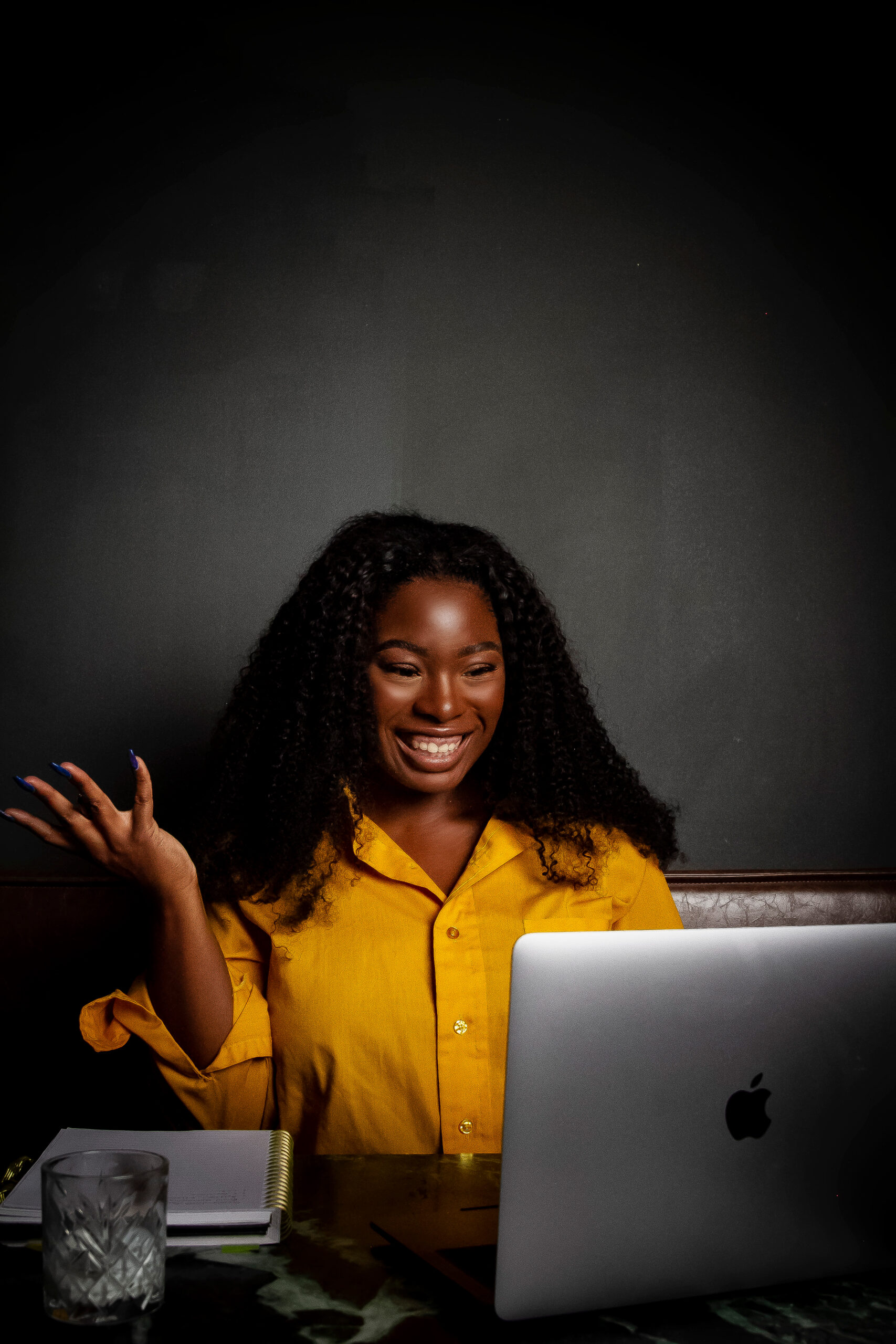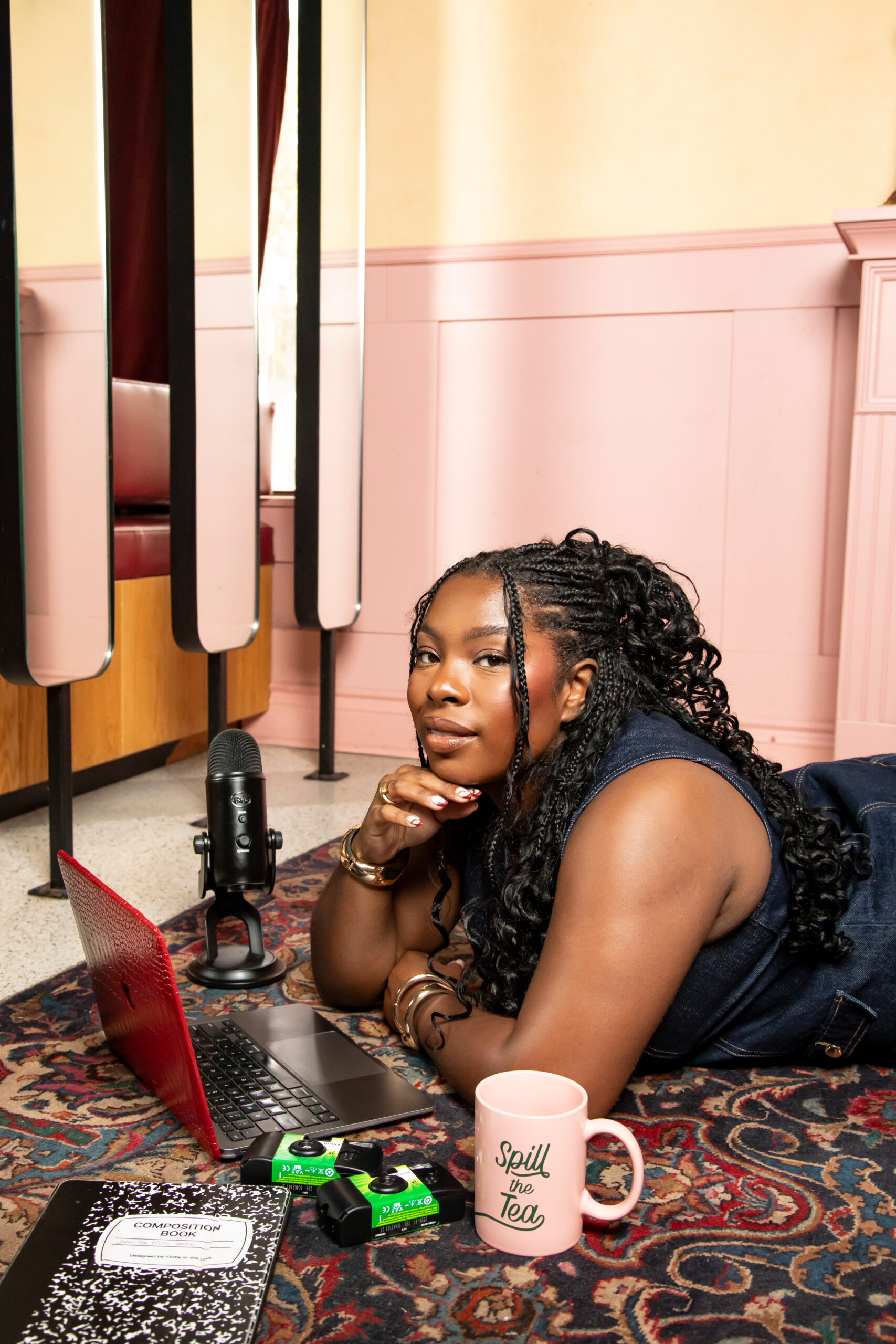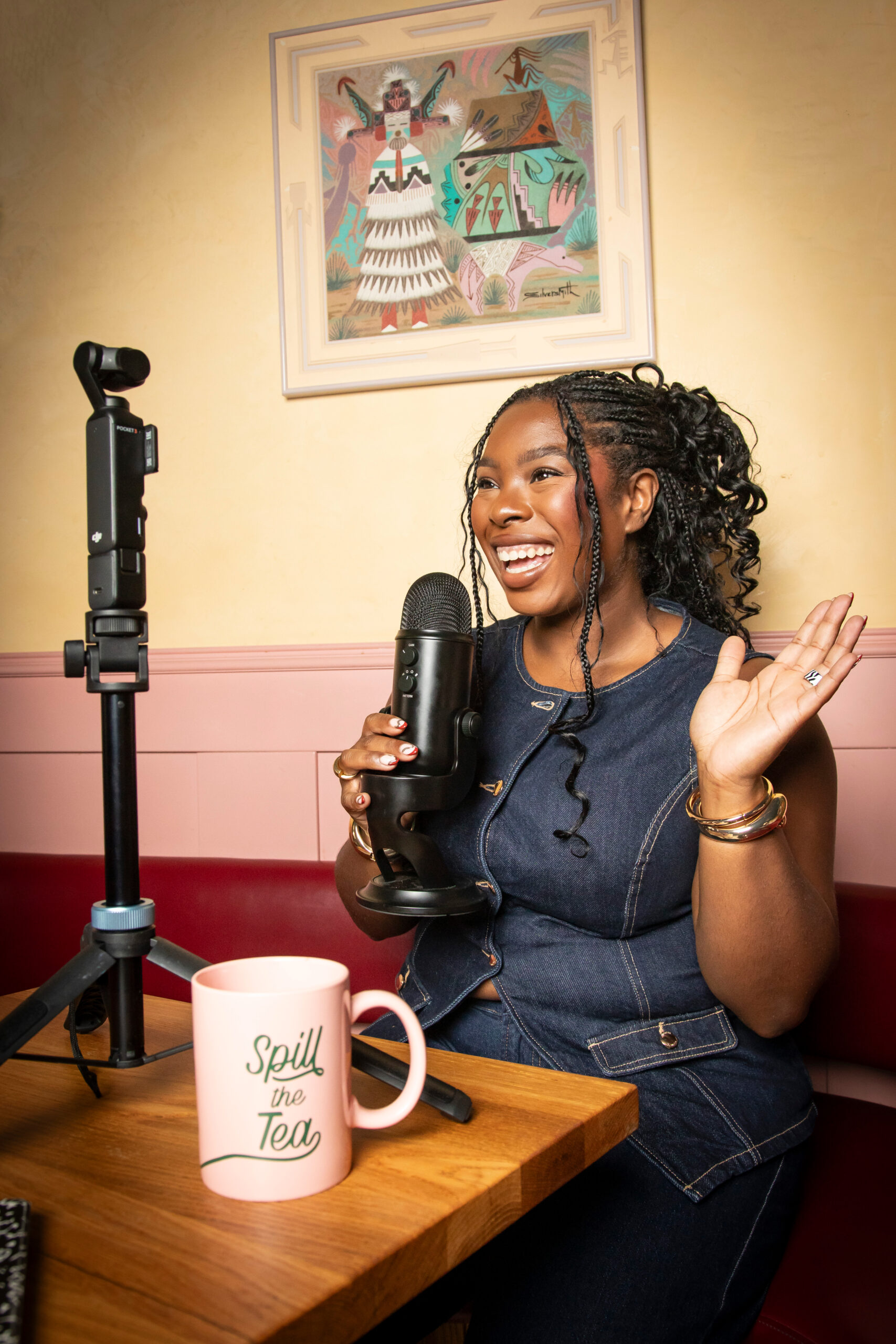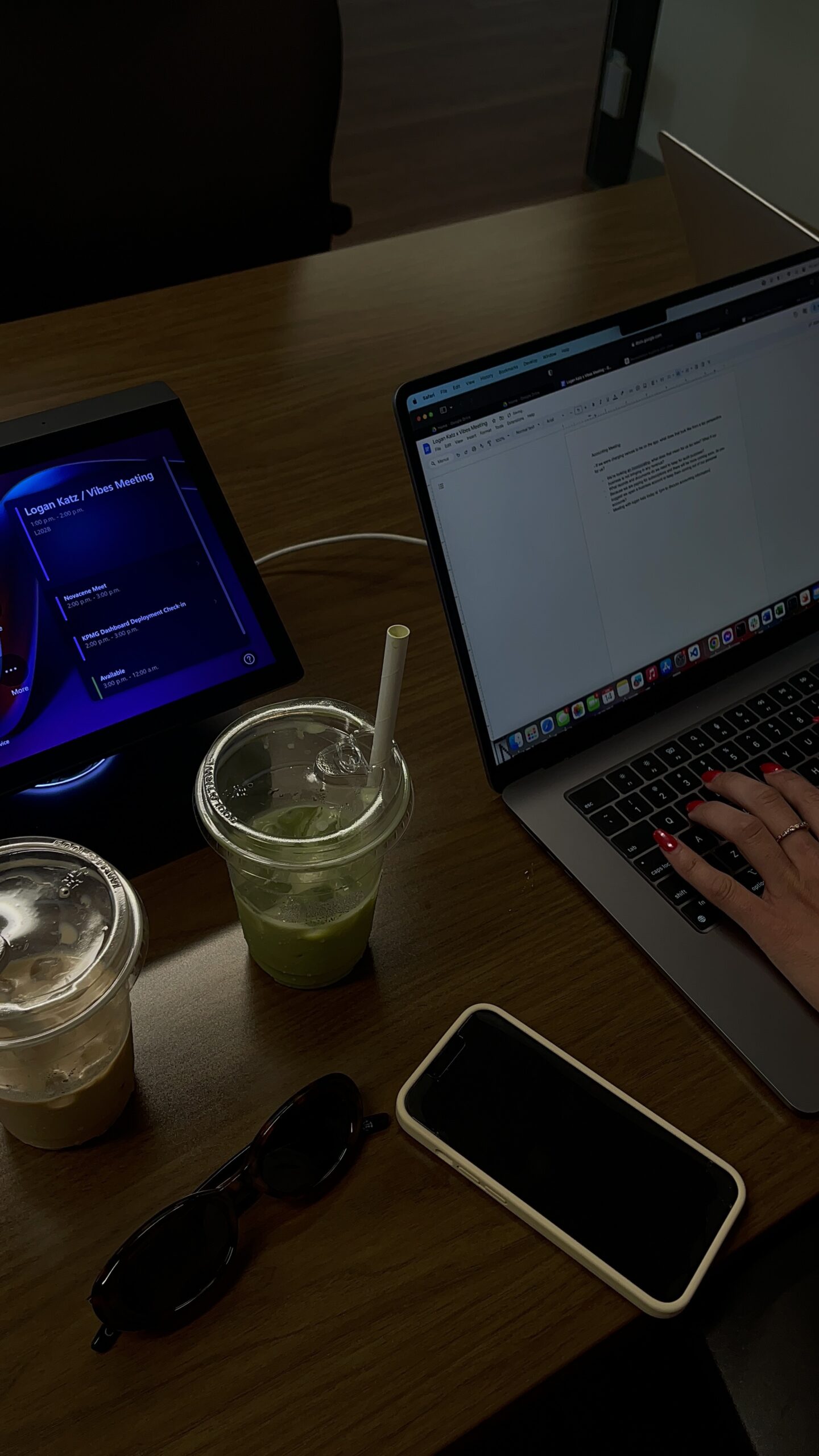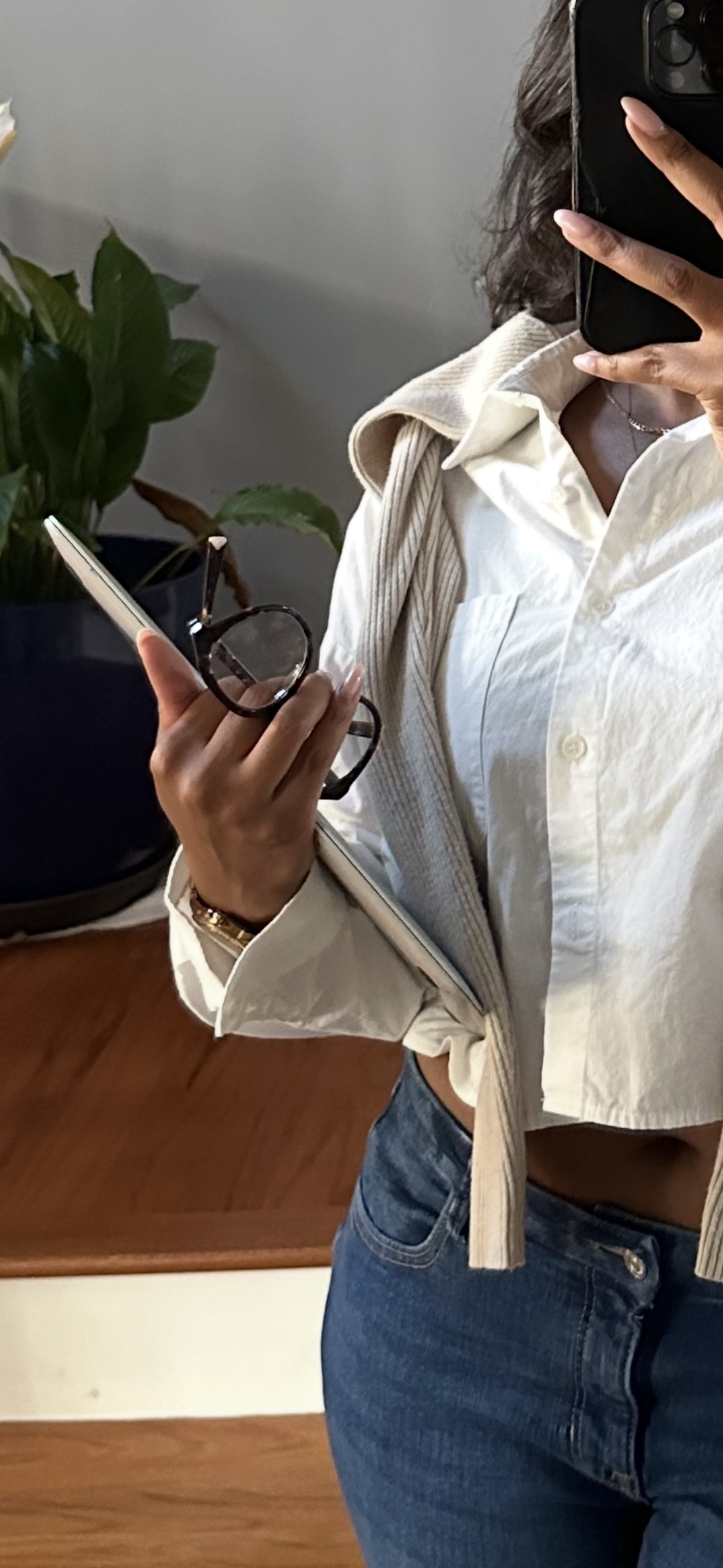HEY FRIEND!
I'm jemilla!
In the past 4 years, I’ve cut my teeth strategizing & writing award-worthy, revenue-increasing, results-snatching copy. And what really lights my fire is writing for woman-owned and BIPOC-led brands. I’m talkin’ the first day after a braiding appointment type of excited! Energizing them to go big with their bold ideas so that when launch time happens, the world thinks “OMG FINALLY, I’ve been waiting for something like this.” And giving them the tools to diversify the market.
about me
services
The Art of Storyselling: How to Blend Stories and Sales Psychology
April 28, 2025
Everybody loves a good story, and the same goes for marketing. Stop my YouTube video for a half-assed ad? I’m ready to fight. But one that uses storyselling? You’ve got my attention!
Storyselling is the act of using sales psychology and storytelling together to attract and engage your audience, highlight what makes your product awesome, and rally brand fans.
It’s better than traditional sales approaches fall flat because it focuses on a narrative and appeals to our emotional while selling the benefits of your product.
So in this post, I’m going to dive into:
- The science behind storyselling
- Core elements of effective storyselling
- Storyselling frameworks
- Storyselling across platforms
- Advanced storyselling techniques
- Common storyselling mistakes
- Measuring storyselling success
The Science Behind Storyselling
According to research from American neuroscientists Paul Zak, the brain releases oxytocin— the “trust hormone”—when someone hears a good story. This chemical reaction can create a bond between the storyteller and the listener much like the bond between a mother and child.
Plus, according to Harvard professor Gerald Zaltman, up to 95% of purchasing decisions happen in the subconscious mind. Combine these two facts, and you’ve got the perfect recipe for conversion without the ick factor.
Storyselling works because it:
- Creates emotional connections—because fyi, people buy on emotion, and then justify with logic
- Makes complex information memorable
- Builds trust through shared experiences
- Triggers specific psychological responses that drive action
That could be in a variety of ways: just take a look at IKEA’s approach in this early 2000s ad:
V.s. their heartfelt approach in this 2020s ad:
Different messages, different approaches to storyselling, with the same impact: an emotional connection was created, shared experiences were capitalized on, and it drives action from a deep part of our minds.
Core Elements of Effective Storyselling
Authentic Connection
The best storyselling doesn’t feel like selling at all! it feels like a friend sharing an experience you can relate to. This means:
- Creating characters your audience identifies with
- Tapping into situations that mirror their experiences
- Showing brand values that align with their beliefs
- Capitalizing on cultural references that resonate with them
Take Amazon’s 2024 “Midnight Opus” holiday ad. A story that begins with Amazon Prime’s convenience overnight delivery. Rather than focusing on that benefit, they told a a heartfelt story about a theatre full of employees pitching in to get a talented janitor his chance to shine on stage.
- Relatable protagonist: a talented janitor
- Shared values: camaraderie amongst co-workers
- Cultural relevance: there are talented people all around us, but we never get the chance to see their gifts
- Emotional resonance: the joy of seeing a talented, everyday blue collar worker getting their time in the spotlight
Transformation Journey
Every compelling story—and every effective sales pitch—centers around transformation. As should your storyselling! I’m talking:
- The “before” state (problem your audience faces)
- The journey (process of change, with all it’s wins and obstacles)
- The “after” state (benefits of your solution)
It’s the Hero’s Journey (which I’ll get into later in this post) that all the most popular movies are made of. Just think: Captain America. The Beauty Shop. Everything, Everywhere, All At Once.
This structure works because it mirrors how we experience change in our own lives. We start somewhere, go through something, and end up transformed.
Strategic Structure
Even the most authentic story needs structure to be effective. Your storyselling should include:
- A hook that grabs attention
- Rising tension that maintains interest
- Strategic placement of sales psychology triggers
- A climax that drives action
Just look at the most trending videos on TikTok and you’ll see a majority of these!
Here’s one with a killer visual, audio, and text hook:
@9tianna WTAFHELLY – The Girls… produced by @4ortyy_ #studio #studiosession #rapping #wthelly #freestylerap #whattodoinlondon
♬ original sound – T
The “Who TF Did I Marry” 50-part series is a masterclass in rising tension that keeps us locked in and climaxes that drive as action to—yup, you guessed it—watch the next video.
While this video uses an attention-grabbing hook and a bold statement in a one-two-punch, rising tension AND sales psychology like social proof, storytelling, and establishing her authority.
@justinescameraroll ✨new series✨ featuring cool sh*t I get to do bc I’m not scaryyyyyyy 😘 @Casper you saved my back. #gifted
♬ original sound – Justine’s Camera Roll 📸✨
Storyselling Frameworks
Hero’s Journey Adaptation
This classic storytelling framework puts your CUSTOMER as the hero, not your brand. It goes like this:
- Your customer faces a challenge (ordinary world)
- They encounter your brand/solution (call to adventure)
- You guide them as the wise mentor (meeting the mentor)
- Your product becomes their tool for success (supernatural aid)
- They overcome obstacles with your help (tests and trials)
- They achieve transformation (return with the elixir)
Example: Peloton doesn’t sell exercise bikes; they sell the hero’s journey of personal transformation. Their ads show ordinary people facing the challenge of fitness amidst other personal struggles, discovering Peloton, and transforming into their best selves with the community as their guide.
Before-After-Bridge (BAB)
This simple framework works brilliantly for emails, social posts, and ads because you have the:
- Before: Describe the current painful situation
- After: Paint a picture of life with the problem solved
- Bridge: Show how your offer gets them from before to after
Example: “Tired of staring at a blank screen every time you need to write website copy? (Before) Imagine having compelling content that converts visitors into clients, and clients into brand fans, all without the stress and time drain. (After) My Website Copy Template gives you the exact structure and prompts to create compelling, conversational, and ICONIC copy in half the time. (Bridge)”
Problem-Agitate-Solution (PAS)
This classic sales framework gets a storyselling upgrade:
- Problem: Identify a pain point through a relatable scenario
- Agitate: Deepen the emotional impact of the problem
- Solution: Introduce your offer as the path to relief
Now if you don’t want to agitate the pain and be too negative, you can still do this in a positive way! It takes some finessing, but it is possible.
Example: Let’s go back to Justine selling the Casper mattress and making good use of her brand deal (I’m trying to take a page out of HER book, mmKAY?!). She tells the story about her sh*tty sleep score (Problem), how much she wants it to work so she gets a better quality of sleep (Agitate), and how her sleep score improved (Solution).
Storyselling Across Platforms
The best storyselling adapts to the platform while maintaining a consistent narrative, so let’s get into how to do that on the 3 most important platforms to your small business.
Website Storyselling
Your website is your ultimate storyselling tool, and you have to be strategic about how you do it on every page. You don’t want to do too much, but you also don’t want to fail to do enough. Here’s a guideline:
- Homepage: Establish the main conflict and hint at transformation
- About page: Share your origin story as it relates to your customers
- Service/Product pages: Present specific problems and solutions
- Sales pages: Put the full storyselling journey into action
Looking to one of my own clients as an example, Atabey & Co. tells a cohesive story across every page. From the two founders’ separate journey’s before joining forces to shake up the podcast industry to customer transformation stories that make you believe in their impact.
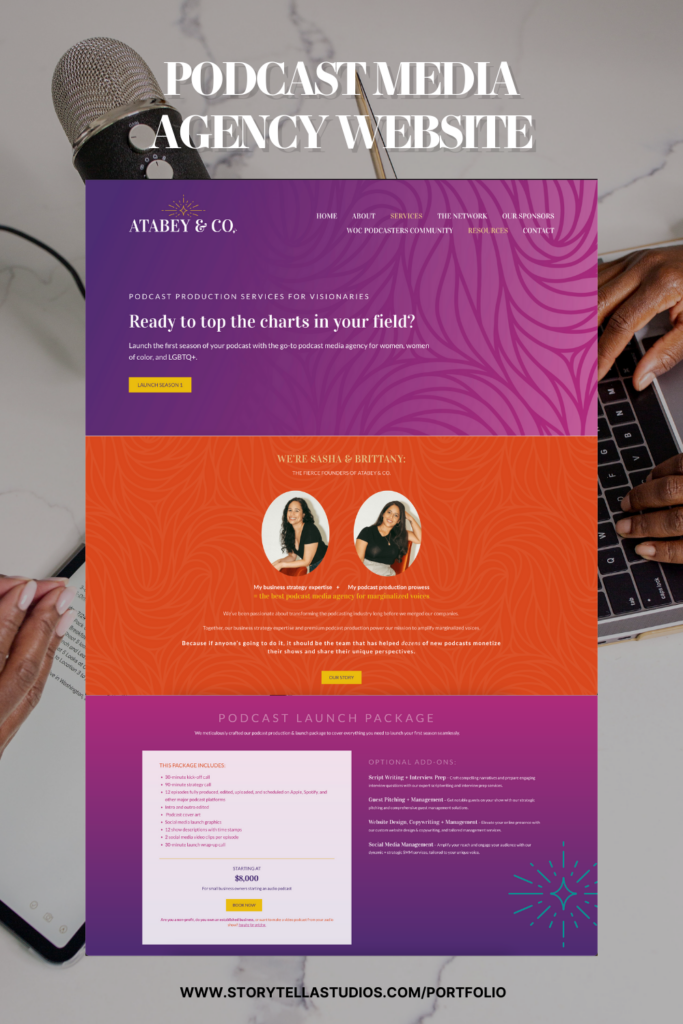
Email Storyselling
Email sequences give you room to storysell for as long as you need to!
- Welcome sequence: You can introduce your brand story and establish connection
- Nurture emails: You can share customer success stories and deepen the narrative
- Sales sequence: You can build to a climax that makes your offer the obvious next step
Social Media Storyselling
Don’t be scared by the character limit of a social media caption! Even with limited space, you can tell powerful stories on:
- Instagram: Use carousel posts to create mini-narratives, and then continue the conversation in the caption
- Threads: It’s in the name, you can continue your story in as many posts in a thread as needed
- TikTok: Create hook-problem-solution stories in 30 seconds. If someone comments asking for the long story long, you can create a separate video for that and BOOM! You’ve got more content to make stronger connections
- LinkedIn: Not my preferred platform, but don’t get it twisted! You can share transformation stories that showcase results in scroll-stopping ways (please get creative, that platform is so boring)
Advanced Storyselling Techniques
You like to go above and beyond, huh? I love coming across an extra baddie! When you want to go the extra mile, try these storyselling techniques:
Nested Stories
Layer multiple narratives for deeper impact:
- Your brand story
- Customer success stories
- Industry transformation stories
Open Loops
I LOVE a juicy open loop because it creates curiosity that keeps your audience engaged:
- It starts a story but delays the resolution
- Your reader will start to ask questions that makes them want answers
- You can hint at information you’ll reveal later, which only makes them want to satisfy their curiosity by reading the whole thing
Soap operas mastered this technique since the time of our Nanas, and it works just as well in marketing. Ever notice how Netflix shows end each episode on a cliffhanger? That’s an open loop in action.
(Btw all the streaming execs out there: STOP CANCELLING SHOWS THAT END ON HUGE CLIFFHANGERS. Your viewers hate you for it)
Pattern Interrupts
While I hate surprises in real life, I love to see it in marketing. You can break expected patterns to recapture people’s attention with:
- Surprise statistics
- Unexpected twists
- Format changes
Like this ad from The Lung Cancer Association that I always think about ⬇️

Common Storyselling Mistakes
Before you sit down in front of the blank page and try to bang one out, make sure to avoid:
- Fake stories: Your audience can smell inauthentic narratives a mile away
- Disconnect between story and offer: The story needs to naturally lead to your solution
- Cultural tone-deafness: Misunderstanding your audience’s cultural context—I’m sure an ad comes to mind that had you looking at it like 😒 (cough cough Kendall Jenner + Pepsi)
- Missing the emotional core: Facts without feelings don’t drive action, so make sure to start with emotion and then end with logic
- Too much story, not enough selling: Balance is key, so remember that at the end of the day you’re trying to sell. The story should support that, not take over
What to Do Before Storyselling
Research Your Audience’s Stories
Before you craft your storyselling, collect:
- Voice of customer data — how do they talk? What’s the general sentiment?
- Common pain points and desires, and how deeply they feel them
- Cultural context and references (you can go to social media comments for this)
- Success stories and testimonials (your own and your competitors’)
Develop Your Core Narratives
Create a library bank of your story elements:
- Your origin story
- Customer transformation stories
- Product/service journey stories
- Vision and mission narratives
It’ll be so much easier to reuse and recycle them when you have it all in one place!
Map Stories to Your Sales Funnel
Different stories work at different stages!
- The awareness stage: Relatable problem stories shine here
- Consideration stage: Transformation journeys are the most impactful at this point
- Decision stage: Detailed success stories that pull your reader to buy your product over a competitor’s
Ready to Transform Your Marketing?
Storyselling isn’t just another marketing tactic. It’s a complete shift in how you connect with your audience. By blending authentic narratives with strategic sales psychology, you create content that resonates on a human level while guiding your audience toward a buying decision.
Remember: the most powerful selling doesn’t feel like selling at all. It feels like a story worth being part of.
Want to ucnover your unique stories and take your storyselling skills from freshman to pro level? I can help with that! Inquire now for my 1:1 copywriting services>>>
Or grab my Comprehensive Brand Voice Guidelines Workbook to start developing your authentic brand narrative today!
